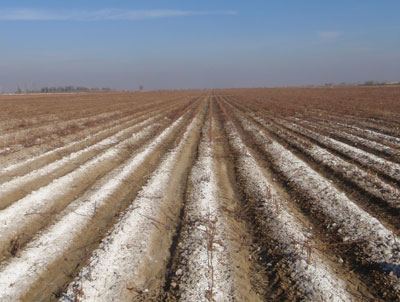Research project on measures against farmland damage from salinization
Related Research Program
Stable Food Production
2025-08-04
In the arid and semi-arid region of Central Asia, salinization caused by high groundwater level affects agricultural productivity (Fig). In order to mitigate salinization, a research of technologies on monitoring of soil and water, irrigation and drainage, and farming have been implemented.

